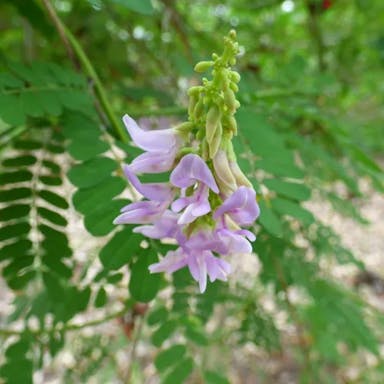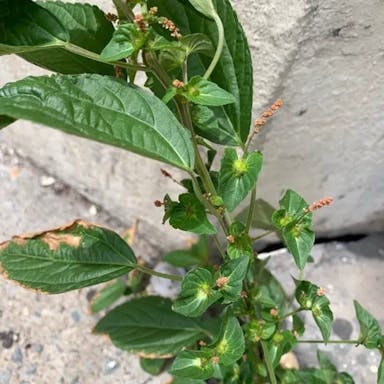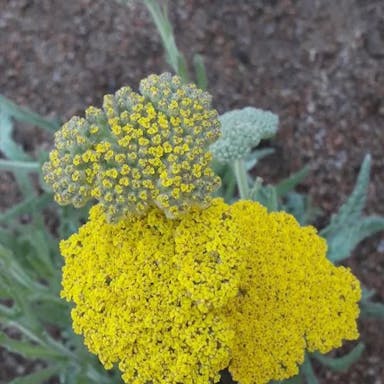Copiapoa de philippi typically blooms in the spring or early summer in the United States. The flowers of this plant are usually at their best during the month of May. Blooming occurs once a year, lasting for a few weeks. The period required for full blooming can vary but generally takes around 2-3 weeks. To extend the blooming period, ensure the plant receives adequate sunlight, water, and proper drainage. Pruning faded flowers can also encourage new blooms to appear.
Copiapoa de philippi
- Scientific name
- Copiapoa cinerea
Basic Information
- Cactaceae Family Copiapoa Genus Copiapoa de philippi Species
- Cactaceae > Copiapoa > Copiapoa cinerea
- 83%
- The Completeness of This Encyclopedia
Please help us complete the encyclopedia, Terrarium is a encyclopedia service to be completed with everyone in the world. Currently, this page is 83% complete. For more information on how to contribute, please click here.
- Forb/herb
- Shrub
- Height
- 15cm ~ 30cm
- Flower Color
- Leaf Color
- Anthesis
- summer
- Sunlight Exposure
Full Sun Long hours of sunlight from morning to afternoon Partial Shade A location in the shade of a tree or where either the morning or afternoon is shaded Full Shade A place where there is no direct sunlight
- Full Sun
- Hardiness Zones
This is an indicator to know to which zone each plant can winter. Knowing the zone of each plant gives you an idea of the cold temperature resistance when grown in the ground without a roof. 2: -42.7 to -40.0 3: -39.9 to -34.4 4: -34.3 to -28.9 5: -28.8 to -23.3 6: -23.2 to -17.8 7: -17.7 to -12.2 8: -12.1 to -6.7 9: -6.6 to -1.1 10: -1.0 to 4.4 11: 4.5 to 10.0
- 10
- Cold resistance
- Fair
- Heat resistance
- Good
- Habitat of origin
- Chile
- Growth Rate
- Slow
What is Copiapoa de philippi (Copiapoa cinerea)?
What is Copiapoa de philippi (Copiapoa cinerea)
Flower meaning
The flower language usually used in the United States for Copiapoa de philippi associated with : - Love and Devotion - Friendship - Gratitude One typical case is Love and Devotion, which indicates profound care and obligation to another person. This flower language is frequently related with romantic bonds and powerful emotional ties. The plant requires well-draining soil and low water. It is vulnerable to fungal diseases. Propagation is by seed or leaf cuttings. The plant is native to Chile.
0
0
Calendar of Copiapoa de philippi (Copiapoa cinerea)
Calendar
Copiapoa de philippi can be propagated through seeds, division, and offsets. Sow seeds in well-draining soil, keeping them moist until germination. Division involves separating offsets from the main plant, ensuring each division has roots attached. Cuttings can be taken from healthy stems, allowing them to callus before planting in a suitable medium. Leaf cuttings can also be used by removing a healthy leaf and planting it in a moist substrate. To maximize propagation success, utilize a combination of methods to increase the chances of successful reproduction. Harvest seeds when they are mature and dry, ensuring they are stored in a cool, dry place until ready for sowing.
How to grow Copiapoa de philippi (Copiapoa cinerea)
Watering
Copiapoa de philippi is a species of cactus native to Chile, specifically found in the Atacama Desert. It belongs to the Cactaceae family and is known for its distinctive gray-green colored stems covered in white woolly hairs. The plant produces small yellow flowers that bloom in spring or early summer. These cacti are typically solitary, globular, or cylindrical in shape, with a height ranging from 3 to 12 inches. Copiapoa de philippi is relatively slow-growing and requires well-draining soil and full sun exposure to thrive. It is drought-tolerant and should be watered sparingly to prevent root rot. Copiapoa cinerea, a variety of Copiapoa de philippi, is characterized by its grayish-blue stems and yellow flowers. This plant is highly sought after by collectors for its unique appearance and resilience in arid conditions. The fruit of Copiapoa de philippi is edible, although it is not commonly consumed.
Soil and Fertilizer
For Copiapoa de philippi, watering frequency should be minimal, approximately every 2-3 weeks during the growing season. This plant is adapted to arid conditions, so overwatering can lead to root rot. During the dormant period in winter, reduce watering to once a month or less, allowing the soil to dry out completely between waterings. Ensure the soil is well-draining to prevent waterlogged conditions. In hot, dry climates, adjust watering frequency accordingly to prevent dehydration.
Sunlight and Place
The flower language commonly used in America for Copiapoa de philippi is: - Love and Devotion: Represents deep affection and commitment. - Friendship and Loyalty: Symbolizes strong bonds and trust. - Gratitude and Appreciation: Conveys thankfulness and recognition. Example: Love and Devotion - Giving a bouquet of Copiapoa de philippi flowers signifies a profound love and unwavering dedication to someone special.
Advanced Information of Copiapoa de philippi (Copiapoa cinerea)
Pruning
Copiapoa de philippi needs trimming to remove dead or hurt stems. This improves air flow and keeps its form. Spring before new growth is the best time to trim. Use clean, sharp tools to make clean cuts at a 45-degree angle. After trimming, let the cuts heal over before watering to stop rot. Do not over-trim to ensure health and natural growth. Checking the plant after trimming for disease or pests is recommended.
0
0
Planting and Harvest
Copiapoa de philippi is best planted in soil to prevent overwatering harm. The pot should have holes to drain excess fluid. Repotting every 2 to 3 springs refreshes the earth and offers room to mature. Gently take the plant from the current container, check the roots carefully, and put it in a somewhat bigger holder with new soil. Cold or dampness for long periods can lead to poor health. Keep the plant away from frost and too much wetness.
0
0
Propagation
Copiapoa de philippi benefits from pruning to remove dead or damaged parts, improve air circulation, and promote new growth. Pruning should be done in spring or early summer to minimize stress on the plant. Use clean, sharp tools to make precise cuts, ensuring a smooth healing process. After pruning, allow the cuts to callus over before watering to prevent rot. Monitor the plant for any signs of disease or pests post-pruning to address them promptly. Regular pruning helps maintain the health and appearance of Copiapoa de philippi.
Pests and Diseases
Copiapoa de philippi thrives best when potted rather than in-ground due to its specific soil and drainage requirements. To pot this plant, use a well-draining cactus mix in a shallow container with drainage holes. When repotting, gently remove the plant from its current pot, inspect the roots for any damage, and place it in a slightly larger pot if necessary. Ensure the roots are spread out evenly and cover them with soil, pressing lightly to secure the plant. Water sparingly, allowing the soil to dry out between waterings to prevent root rot. Mishowing, or displaying the plant, can be done indoors near a sunny window or outdoors in a sheltered area with ample sunlight.
Habitat of Copiapoa de philippi (Copiapoa cinerea)
Habitat
Toxicity of Copiapoa de philippi (Copiapoa cinerea)
Health Benefits
- edible
- Inedible
- Toxic
- No toxicity
NO DATA
Toxic for dogs and cats
NO DATA
Q&A of Copiapoa de philippi (Copiapoa cinerea)
- What are the most successful methods for propagating Copiapoa de Philippi plants?
The most effective methods of growing Copiapoa de Philippi, sometimes called Copiapoa cinerea, are starting new plants from seeds or grafting. Put the seeds in soil that drains well. Keep it a little warm and moist so the seeds will sprout. Joining part of a healthy plant to another root system, called grafting, can also help Copiapoa de Philippi grow strong. Both need very careful handling and good conditions to work well.
- How do I provide optimal care and growing conditions for Copiapoa de Philippi cacti?
To provide best care for the plant Copiapoa de Philippi, also called Copiapoa cinerea, make sure it is planted in soil that drains well and gets full sunlight to some shade. This type of cactus is originally from the dry areas of Chile, so it is used to dry conditions. Water sparingly, especially during winter months when the plant is dormant. Too much water can cause root rot, a common problem with cacti. Add a small amount of fertilizer during the growing season, usually from spring to early autumn, using a fertilizer made for cactus plants. Remember, Copiapoa cinerea grows slowly, so patience is important in caring for it.
- Is there a recommended way to choose?
Copiapoa de philippi has several varieties. Seeds must be new and healthy. Seedlings need firm stems and good roots. One variety has big flowers and spines. Another is small and clusters a lot. Think about what you want - big flowers or a little plant. Purchase from good sellers for the best plant.











